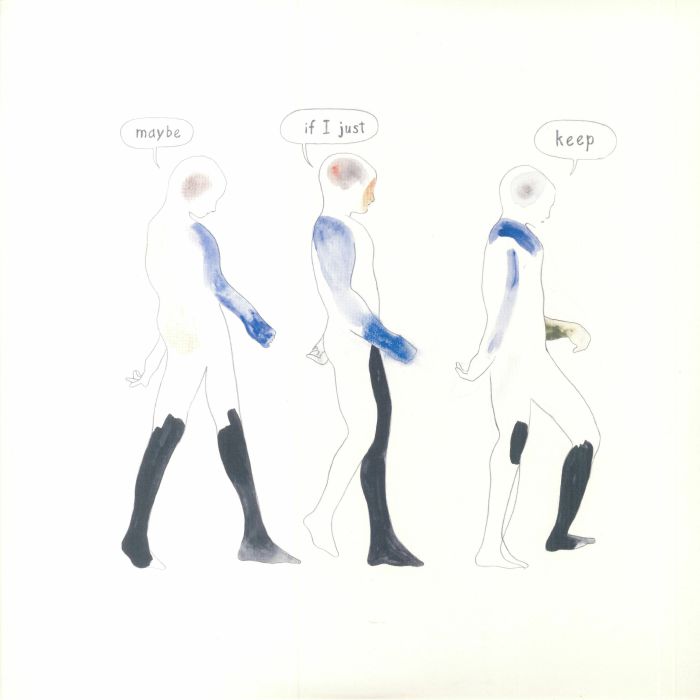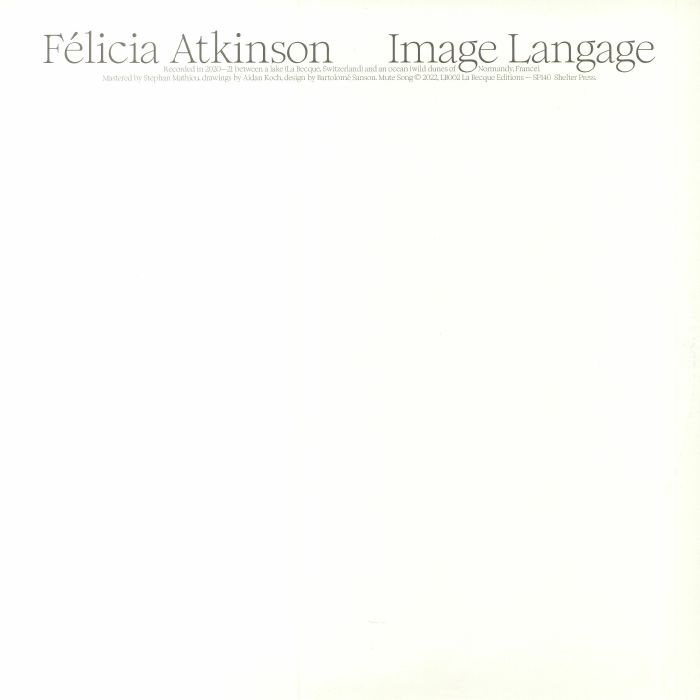Description
2022, 2×12″ LP, Shelter Press/La Becque Editions.
“Felicia Atkinson‘s music always puts the listener somewhere in particular. There are two categories of place that are important to Image Language: the house and the landscape. Inside and outside, different ways of orienting a body towards the world. They are in dialogue, insofar as in the places Atkinson made this record — Leman Lake, during a residency at La Becque in Switzerland, and at her home on the wild coast of Normandy — the landscape is what is waiting for you when you leave the house, and vice-versa. Each threatens — or is it offers, kindly, even promises? — to dissolve the other. Recognizing the normalization of home studios these days, she revisited twentieth-century women artists who variously chose, and were chosen by, their homes as a place to work: the desert retreats of Agnes Martin and Georgia O’Keefe, the life and death of Sylvia Plath. Building a record is like building a house: a structure in which one can encounter oneself, each room a song with its own function in the project of everyday life. At times listening to Image Language is immediate, something like visiting a house by the sea, sharing the same ground, being invited to witness Atkinson’s acts of seeing, hearing, and reading in a sonic double of the places they occurred. In an aching moment of clarity in ‘The Lake is Speaking,’ a pair of voices emerge out of the primordial murk of piano and organ, accompanying the listener to the edge of a reflective pool that makes a mirror of the cosmos . . . At other times, listening to Image Language is more like being in a theater, the composition a tangle of flickering forms and media that illuminate as best they can the darkness from which we experience it. On ‘Pieces of Sylvia,’ a noirish orchestra drones and clatters beneath and around a montage of vocal images, stretching the listener across time, space, subjectivities. Atkinson says that Image Language is like the fake title of a fake Godard film. There is indeed something cinematic about Atkinson’s work — not cinematic in the sense that it sounds like the score for someone else’s film, but cinematic in the sense that it produces its own images and language and narratives, a kind of deliberate, dimensional world-building in sound. Image Language is built from instruments recorded as if field recordings, sound-images of instruments conjured from a keyboard, instruments Atkinson treats like characters, what she calls ‘a fantasy of an orchestra that doesn’t exist.’ . . . Voice can be a writerly anchor or a wisp of a textural presence. Atkinson’s capacious and slippery speech plunges into and out of the compositional depths, shifting shapes, channeling the voices of any number of beings, subjectivities, or elements of her surroundings — not unlike her midi keyboard, able to speak as a vast array of instruments…” —Thea Ballard (2022)

